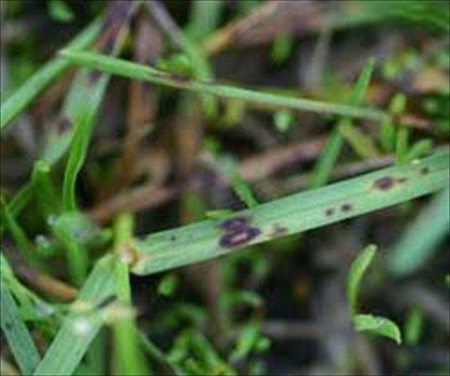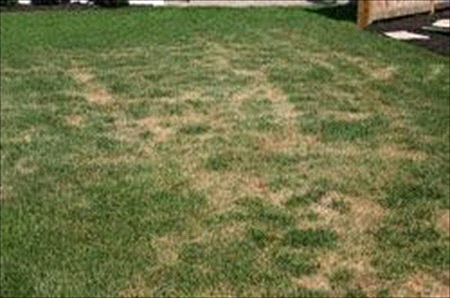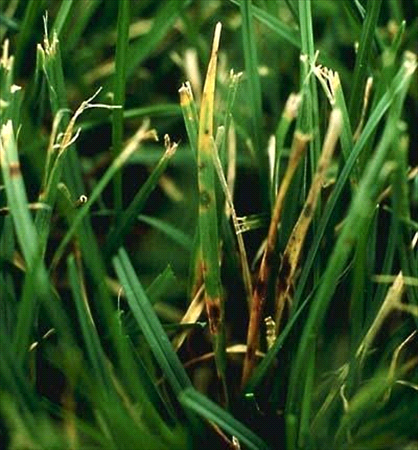Your Cart

LEARN YOUR LAWN: Leaf Spot Disease
Request a Quote
Leaf Spot and Melting Out diseases are often grouped together due to their similar symptoms and effect on turfgrass. Leaf Spot will appear as small, circular or elongated spots on the leaves of the grass plant. These spots are typically brown or tan in colour, with reddish or purplish borders. As the disease progresses, the spots may enlarge and merge together, eventually causing the grass blades to turn yellow or brown and die. The most apparent difference between the two diseases is that the Leaf Spot pathogen is most obvious and will cause the most damage during the heat of the summer months. Leaf Spot can be difficult to control if it goes undetected and can spread quite rapidly given the right weather conditions. It becomes critical to adopt proper cultural practices to improve the health of the lawn and further limit the spread of the disease. However, depending on the size of the infestation and the scope of the damage, other forms of control may be necessary. A thick, healthy, well-maintained lawn is the best line of defense. Here’s how you can adjust your beneficial cultural practices to reduce the spread of Leaf Spot disease: Avoid Watering: Under normal circumstances, you should be watering each area of your lawn for 30-45 minutes, twice per week, in the early morning so the turf is dry by nightfall. However, you should avoid watering when the disease is active. Avoid Mowing: You should avoid mowing when the disease is active. If you do have to mow, make sure your mower blade is razor sharp, so that the blade does not fray the tips of the grass, spreading the disease. Maintain a regular mowing schedule throughout the growing season. In general, you should keep your lawn between 2 ½ and 3 ½ inches high, but during the hottest weeks of summer, you may allow the grass to grow as high as 4 inches. Never remove more than ⅓ of the grass blade at each mowing. Fertilize Regularly: Regular applications of Weed Man’s specially formulated, slow-release granular fertilizer will help provide your lawn with adequate nutrients. These applications are timed specifically to avoid over fertilizing the lawn. Core Aeration: Aerating your lawn can improve soil drainage and help reduce the likelihood of lawn diseases. This will also alleviate soil compaction and allow water and nutrients to penetrate deeper into the soil. Your local Weed Man professional may be able to offer other solutions and recommend the best form of treatment that is available to improve the conditions of your lawn.What Is Leaf Spot?
How Can I Control Leaf Spot In My Lawn?
 English (USA)
English (USA) Français (CANADA)
Français (CANADA)


